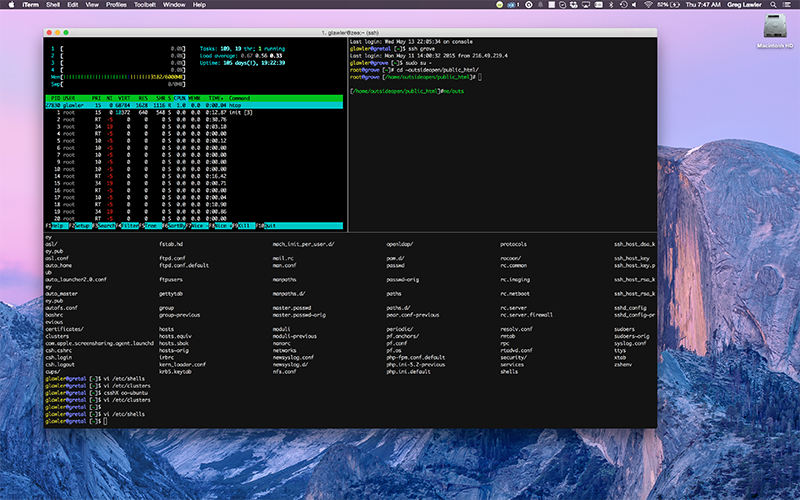

Now, I'll close the "Preferences" window, close this terminal window, and click "Shell" from the menu and click "New Window". Those are all the changes that'll make to the preferences, but feel free to look through the rest and make the changes that you think will help you out. This will just allow me to scroll back through more of my previous commands when I'm working in the terminal.
BREW INSTALL ITERM2 DOWNLOAD
Check the box to "Automatically download and install updates in the future".However, there have been updates since then, including bug fixes for Yosemite, so the first thing I'm going to do is install the updates. Now, as I'm recording this video, the version of iTerm that you get when you click that big button is actually version 2.0 because it's the "Last stable release". Your system will ask if you're sure you want to open this file, and you do, so click "Open". Let's go ahead and open up iTerm by going to the "Applications" folder and double clicking "iTerm".
BREW INSTALL ITERM2 ZIP FILE
At this point, you can safely delete the zip file that iTerm came in.Once you've done that, unzip that file and drag and drop the "iTerm" application into your "Applications" folder for permanent storage.You can download iTerm from by clicking the big download button at the bottom of the homepage.
BREW INSTALL ITERM2 HOW TO
So, in this video, I'll show you how to install and configure iTerm on a Mac. However, iTerm has some additional functionality not present in the default terminal application. If you want, you can use the built in Terminal application to perform all of the functions I'll describe in this series. Macs comes with one simply named "Terminal", however, I've chosen to use a popular alternative terminal emulator named "iTerm". Most operating systems come with a built-in terminal application.


 0 kommentar(er)
0 kommentar(er)
